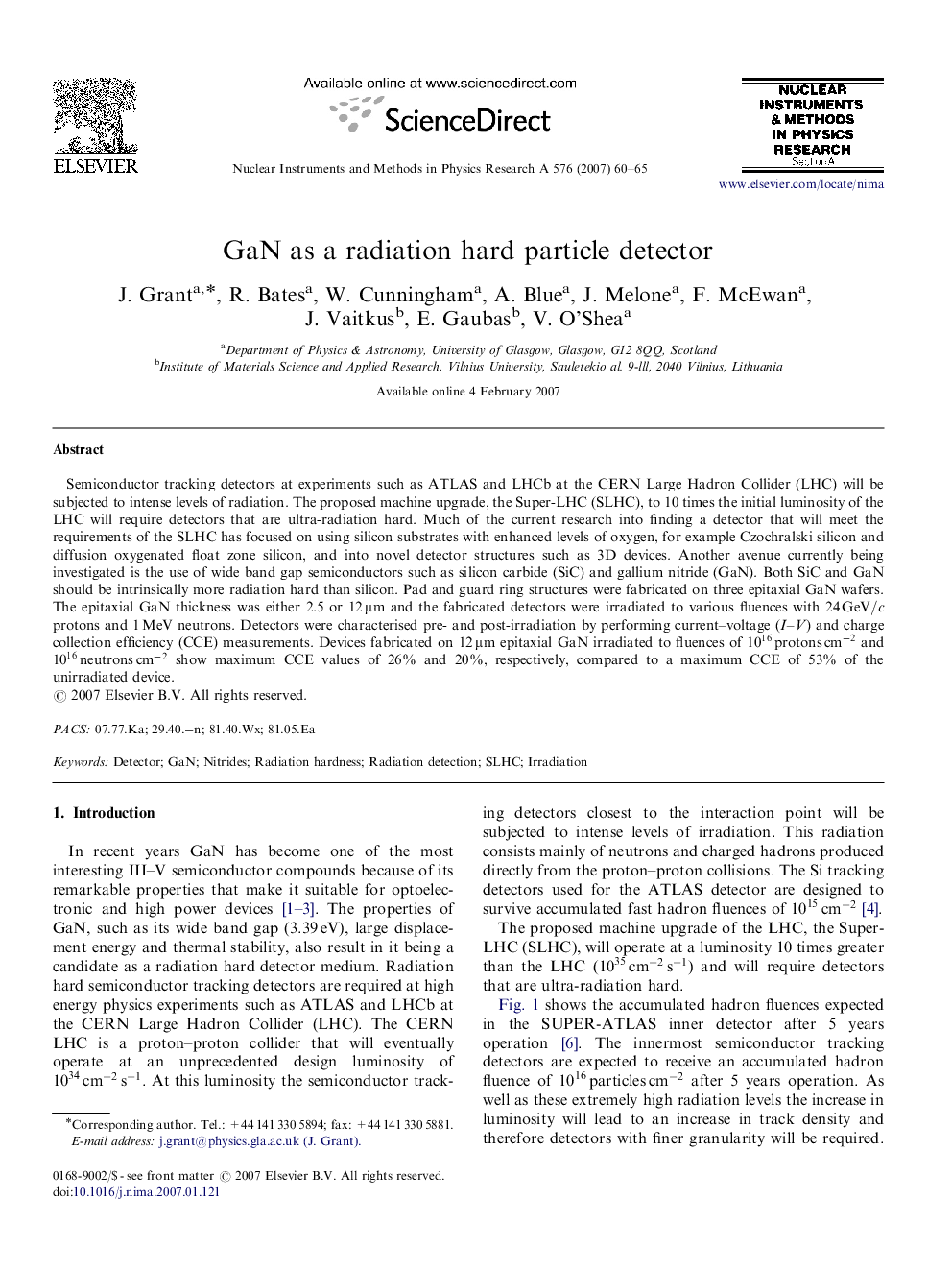| Article ID | Journal | Published Year | Pages | File Type |
|---|---|---|---|---|
| 1830834 | Nuclear Instruments and Methods in Physics Research Section A: Accelerators, Spectrometers, Detectors and Associated Equipment | 2007 | 6 Pages |
Semiconductor tracking detectors at experiments such as ATLAS and LHCb at the CERN Large Hadron Collider (LHC) will be subjected to intense levels of radiation. The proposed machine upgrade, the Super-LHC (SLHC), to 10 times the initial luminosity of the LHC will require detectors that are ultra-radiation hard. Much of the current research into finding a detector that will meet the requirements of the SLHC has focused on using silicon substrates with enhanced levels of oxygen, for example Czochralski silicon and diffusion oxygenated float zone silicon, and into novel detector structures such as 3D devices. Another avenue currently being investigated is the use of wide band gap semiconductors such as silicon carbide (SiC) and gallium nitride (GaN). Both SiC and GaN should be intrinsically more radiation hard than silicon. Pad and guard ring structures were fabricated on three epitaxial GaN wafers. The epitaxial GaN thickness was either 2.5 or 12μm and the fabricated detectors were irradiated to various fluences with 24GeV/c protons and 1 MeV neutrons. Detectors were characterised pre- and post-irradiation by performing current–voltage (II–VV) and charge collection efficiency (CCE) measurements. Devices fabricated on 12μm epitaxial GaN irradiated to fluences of 1016protonscm-2 and 1016neutronscm-2 show maximum CCE values of 26% and 20%, respectively, compared to a maximum CCE of 53% of the unirradiated device.
